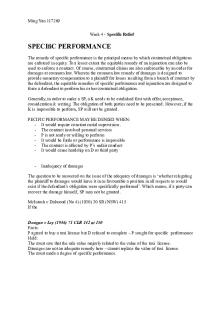SPH 107 Module #4 - Weekly PDF

| Title | SPH 107 Module #4 - Weekly |
|---|---|
| Author | Claudia De la cruz Garcia |
| Course | Foundations of Epidemiology |
| Institution | University of California Davis |
| Pages | 2 |
| File Size | 48.8 KB |
| File Type | |
| Total Downloads | 34 |
| Total Views | 143 |
Summary
Incidence rate and mortality rate practice examples for the scenario: Between August 2000 and January 2001 an epidemiologic outbreak of hemorrhagic fever for the Ebola virus happened in Uganda. The confirmation of 3 confirmed patients by the laboratories helped to identified the infection chain of 2...
Description
Taylor Santos & Claudia Garcia 10/26/2021 Module #4: Weekly assignment Between August 2000 and January 2001 an epidemiologic outbreak of hemorrhagic fever for the Ebola virus happened in Uganda. The confirmation of 3 confirmed patients by the laboratories helped to identified the infection chain of 27 cases (Emerg Infect Dis 2003;9:1430). 1. The distribution of the dates when the cases were reported was from September 18 to October 28 with the following number of cases in each week after the outbreak: 3, 3, 4, 4, 9, 3, 1. In which week is more likely that the primary cases of the outbreak appeared? A. 1 2. In which week is more likely that the incidence rate was higher? C. 5 3. A total of 22 patients died. What is the mortality rate expressed in percentage? D. 81 Mortality rate: Dead/Cases Mortality rate: 22/27 = 0.81 4. The type of contact that occurred more often was: E. Body contact 5. Which type of contact has the lowest attack rate? E. Body contact Attack rate: Sick/ Total Attack rate = 19/70 = 0.27 6. Which type of contact has the highest attack rate? C. Exposure to body fluids Attack rate: Sick/ Total Attack rate = 15/30 = 0.5 7. Which type of contact has the lowest relative risk?
B. Laundry RR = (Sick individuals/Total) *contact* / (Sick individuals/Total) *not in contact* RR = (11/35) / (9/48) = 1.68 8. Which type of contact has the highest relative risk? C. Exposure to body fluids RR = (Sick individuals/Total) *contact* / (Sick individuals/Total) *not in contact* RR = (15/30) / (5/53) = 5.3 9. Which type of contact seems to have the highest transmission risk (in exposed)? C. Exposure to body fluids 10. Based on the results of that study, which of the following strategies to control infections would be the most effective? A. Washing hands and using gloves...
Similar Free PDFs

SPH 107 Module #4 - Weekly
- 2 Pages

Summary - Weekly Module Summaries
- 20 Pages

weekly Module Quiz answers
- 5 Pages

Weekly Assignment 4
- 2 Pages

Week 4 - Weekly note
- 5 Pages

Lesson 4 - Weekly response
- 7 Pages

MOD 4 - module 4
- 24 Pages

Module 4 (Paksa 4)
- 14 Pages

SPH 1150 Spring 2018 (1)
- 7 Pages

BB 107(summer) Tutorial 4(s)
- 3 Pages
Popular Institutions
- Tinajero National High School - Annex
- Politeknik Caltex Riau
- Yokohama City University
- SGT University
- University of Al-Qadisiyah
- Divine Word College of Vigan
- Techniek College Rotterdam
- Universidade de Santiago
- Universiti Teknologi MARA Cawangan Johor Kampus Pasir Gudang
- Poltekkes Kemenkes Yogyakarta
- Baguio City National High School
- Colegio san marcos
- preparatoria uno
- Centro de Bachillerato Tecnológico Industrial y de Servicios No. 107
- Dalian Maritime University
- Quang Trung Secondary School
- Colegio Tecnológico en Informática
- Corporación Regional de Educación Superior
- Grupo CEDVA
- Dar Al Uloom University
- Centro de Estudios Preuniversitarios de la Universidad Nacional de Ingeniería
- 上智大学
- Aakash International School, Nuna Majara
- San Felipe Neri Catholic School
- Kang Chiao International School - New Taipei City
- Misamis Occidental National High School
- Institución Educativa Escuela Normal Juan Ladrilleros
- Kolehiyo ng Pantukan
- Batanes State College
- Instituto Continental
- Sekolah Menengah Kejuruan Kesehatan Kaltara (Tarakan)
- Colegio de La Inmaculada Concepcion - Cebu





